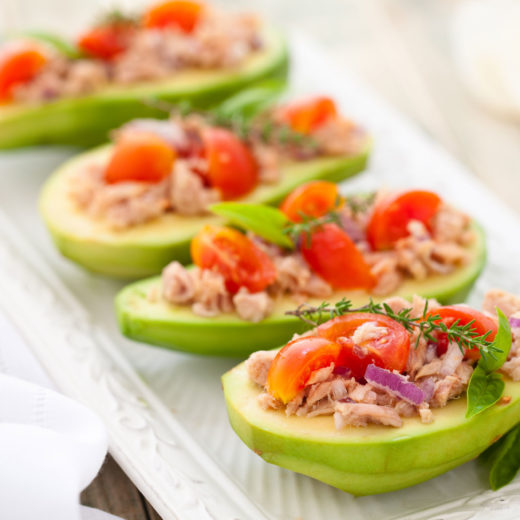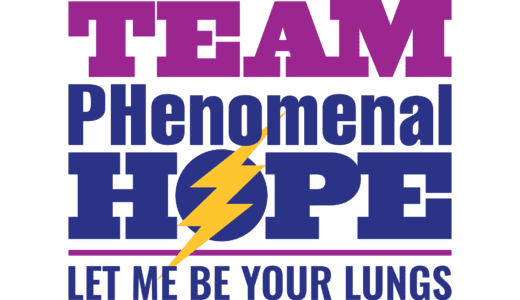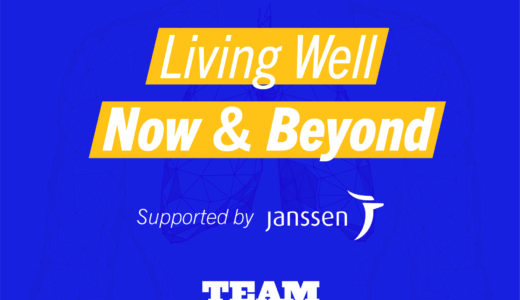Finding Proper Nutrition for Endurance Racing

I’m Anne-Marie, owner of Alderson Endurance and Wellness and proud member of Team Phenomenal Hope!
Last year I was very privileged to be part of the 4-woman team that participated in Race Across America (RAAM) in honor of patients living with pulmonary hypertension.
This year, I’m taking on another crazy bicycle challenge: I will be racing with teammate Patty George in the Race Across the West (RAW) bike race.
Since running my first marathon in 2003, I guess you could say I’ve been bitten by the endurance sports bug. I transitioned from running to competing in triathlons in 2007, and since then I’ve participated in over 30 triathlons ranging from sprint to Ironman distance in addition to running and cycling races.
As I became more involved in my training and racing, I began to notice how my body reacted differently depending on the types of food I was eating. I found that making a few changes in my nutrition strategy greatly improved my athletic performance and recovery time.
My love of endurance sports led me to pursue a triathlon coaching certification and metabolic efficiency training certification in 2013, and I have since had the pleasure of helping runners, cyclists and triathletes work towards their fitness goals. Alderson Endurance and Wellness offers customized training plans for endurance athletes of all abilities, as well as nutrition consulting. Thanks to internet technology, I am able to work with anyone anywhere in the world.
Nutrition is a pretty hot topic for everyone regardless of their activity level. With countless grocery store options available to us, and with marketing messages bombarding us from every angle, making the “right” nutrition choices can be overwhelming. When people ask me, “What should I eat?”, my #1 strategy, and the most common piece of advice I pass along to others, is to eat real, “whole” foods as much as possible and avoid processed “junk”.
What do I mean by “real” or “whole” food? Picture how food looks in nature… think of carrots growing in the dirt, fish swimming in the sea, apples dangling from a tree, or chickens laying eggs. In nature, food is vibrant, colorful, and beautiful!
Choose food that looks as close to its natural form as possible: Roasted carrots, sautéed salmon, whole fruit, and grilled chicken breast or eggs, to follow the previous example. Now, think about much of the food that lines grocery store shelves… Let’s be honest, do mac & cheese, pizza-flavored potato chips, and neon blue Jell-o have any resemblance to anything in nature?! Processed food lacks the nutrients of “real” food, and often contains unhealthy preservatives and inflammatory fats. Athletes and non-athletes alike can benefit by choosing real food instead of processed food.
For Team PH athletes, fueling begins before getting on the bike. To ensure optimal performance, the body needs a steady stream of vitamin and mineral-rich food. Eating a variety of lean protein, healthy fats, and fresh produce provides a solid nutrition foundation for athletes and non-athletes alike. Many people try to avoid fat; however, healthy fats (such as those found in coconut oil, avocado, olive oil, nuts, eggs, salmon, and grass-fed meat/dairy products) are extremely important in maintaining proper hormone balance, improving satiety after a meal (which reduces cravings to snack on unhealthy things), and aiding in absorption of fat-soluble vitamins, among other things. The better quality of fuel we put into our bodies, the better we are able to perform and the faster we can recover!
Many people assume endurance athletes must carbo-load (ie, eat a bunch of carbohydrates before a race) for optimal performance. But, this isnt the case!
When people consume carbohydrates, the body converts the carbohydrates to glycogen for storage in the liver and muscles for future use. However, the liver and muscles can only store enough glycogen to last about 2-3 hours of moderate to high intensity exercise. Once those stores are full, any excess carbohydrates are converted to fat for long-term storage! (And who wants that?!) Generally speaking, people can get enough carbs from their daily intake of fruit, veggies, nuts, and modest portions of whole grains without needing to deliberately “carb load” on things like pasta, cereal and bagels. Many people, including myself, who do not have a gluten (wheat) allergy, have found that removing wheat products like bread, pasta, crackers, cookies, cereal, etc, feel and perform better once they’ve cut it out of their diet. The only way to determine if you can benefit from going gluten-free is to try it. Avoid all gluten-containing products (this will entail some label-reading and asking questions at restaurants) for at least 2 weeks and see if you notice a difference.
Prior to a workout, I recommend having a meal comprised of healthy fat, protein, and carbohydrates. An omelet made with veggies is a good breakfast option; something like salmon with sweet potatoes or chicken and broccoli with cheese are good lunch/dinner options. Some people find that they can benefit from adding a portion of dense carbohydrates like rice or quinoa to their meals. The combination of carbs, protein and fat provides both energy and satiety to avoid feeling hungry shortly into the workout. Post-workout meals should be very similar, as meals containing both carbs and protein post-workout have been shown to speed recovery time more than just carbs or just protein alone.
Upon learning about RAAM or RAW, a common question is, “How do you eat and keep going throughout the race?” For a big endurance race like RAAM or RAW, nutrition is a major consideration and carries as much weight as the training itself. During 4-person RAAM, we were able to have breaks of about 6 hours where we could eat a full meal. While we were riding, we would rely on liquid calories from Generation UCAN (more about this product below) and snacks like beef jerky, granola bars, nuts, and yes, even some things like Sourpatch Kids for a quick jolt when we were getting tired. During 2-person RAW, we will have less recovery time between shifts, and will need to rely more on liquid calories and quick snacks for energy.
Hydration during a race is essential and can’t be overlooked! Luckily, bike frames are designed to carry water bottles so we can always have water with us. In hot weather, we also supplement with electrolyte tablets to maintain healthy levels of electrolytes in our bodies. The amount of water required by an athlete is dependent on a few factors: external temperature, duration/intensity of exercise, and how much they’re sweating.
Team PH has had great success with a sports nutrition product called Generation UCAN. Generation UCAN is derived from organic cornstarch, which is a carbohydrate.
Unlike most sports nutrition products that contain various forms of sugar, the organic cornstarch in UCAN digests quickly without a spike in blood sugar, and provides a more constant supply of energy. Generation UCAN was a staple for all 4 of us on our RAAM journey; we would consume 2-3 servings mixed into water before a shift and it kept us going strong across deserts, over mountains, and even through thunderstorms!
This year, Team PH has added a drink supplement called Beet Boost to our nutrition line-up. Beets naturally contain nitric oxide, which has been shown to prolong endurance exercise.
Though I’ve mostly discussed nutrition for ultra-endurance events RAAM and RAW as examples, the same principles can be applied for any type of exercise, such as running a local 5k or even someone just getting into fitness by taking neighborhood walks.
For anyone, regardless of activity level, my advice is to cover half of your plate with colorful veggies (think leafy greens like spinach, kale, lettuce; broccoli, cauliflower, carrots, sweet potato, peppers, to name a few) and then add a protein source. Poultry, beef, fish, eggs, lamb are some examples, and organic/wild-caught/pasture-raised is best.
For plant-powered athletes, lentils, beans and nuts, provide good protein options. (Plant-powered athletes may need to supplement their meals with protein powder like hemp protein, pea protein, or brown rice protein, to ensure they are getting an adequate amount of protein to meet their activity levels.)
Regardless of the protein source, it is also important to balance the meal with healthy fats such as olive oil, coconut oil, avocado, nut butter or nuts, grass-fed butter or ghee to name a few. Fruit offers health benefits, but because of the higher sugar content relative to vegetables, it is best eaten after a meal as dessert. Treats like ice cream, cookies, and cake shouldn’t be entirely avoided, but it is best to keep them as “treats”: something to indulge in occasionally rather than daily.
Ultimately, individuals respond differently to different nutrition strategies. You can use the above ideas as a guide, and see how you feel after a meal or during a workout. If you feel energized and alert, the foods you ate were probably a good choice for you! If you feel sluggish or experience digestive issues after a meal, you may need to look more closely and try eliminating certain foods to see if you’re sensitive to a particular food or food group. If you feel hungry again shortly after eating, try gradually increasing your protein and fat portions relative to carbohydrate portion. It is truly interesting to learn how food impacts how we feel, think and perform and discover which foods make us feel our best!
– by Anne-Marie Alderson



